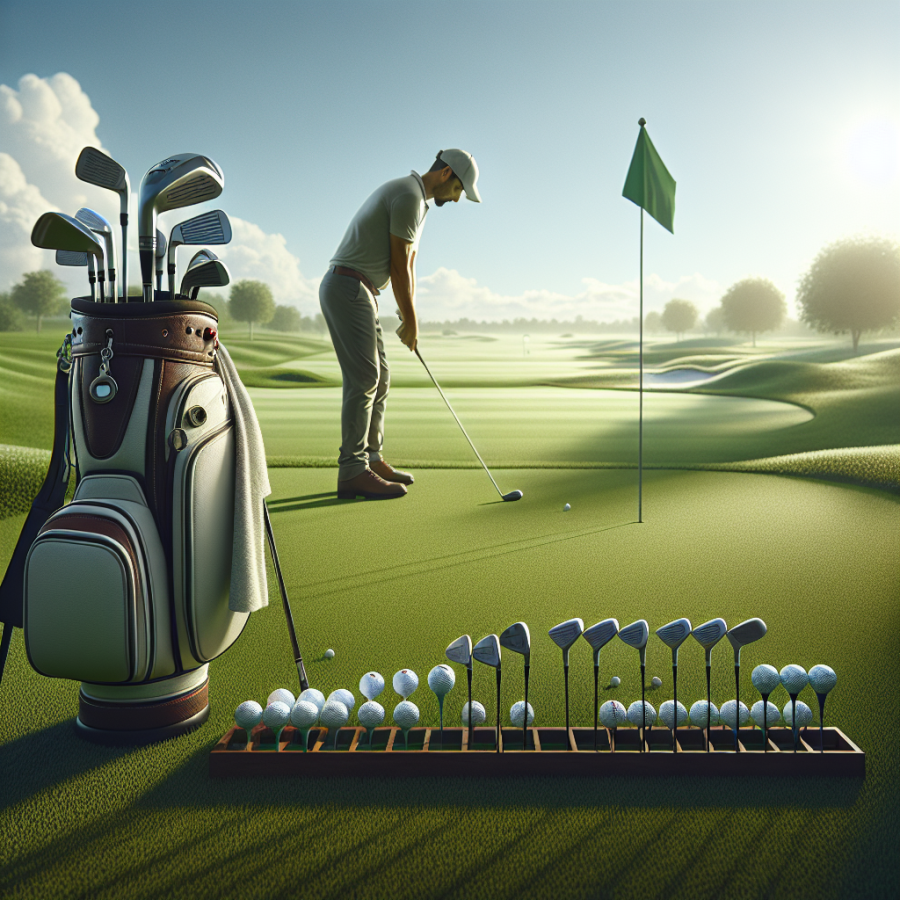Key Factors to Consider When Choosing the Perfect Golf Clubs
Selecting the perfect set of golf clubs can significantly enhance your game. When walking into a golf store, it can be overwhelming to see a wide array of shiny golf clubs displayed on the shelves. Each of them promises to improve your game, but how do you know which one is the right one for you? Here are some key factors to consider when choosing the perfect golf clubs.
1. Skill Level: The first thing you should consider when buying golf clubs is your skill level. For beginners, using simpler, more forgiving clubs that are designed to hit the ball straighter and further is beneficial. As your skills improve, you can then upgrade to specialized clubs that offer more control and accuracy but are less forgiving of mis-hits.
2. Swing Speed: Different golfers have different swing speeds, which impact the kind of golf club to use. Golfers with slower swing speeds should consider using flexible-shaft clubs that will help increase distance, while those with faster swing speeds might benefit from stiffer shafts that allow for more control.
3. Budget: Golf clubs can run the gamut from relatively inexpensive to very pricey equipment. It’s essential to set a budget before you start shopping so you can narrow down your options. Relatively less expensive clubs are good for beginners as they are often upgrading as they get better.
4. Games Frequency: How often you play the game will also influence the type of clubs you need. If you play frequently, it will be beneficial to invest in high-quality clubs that can withstand repeated use.
5. Body Physique: Your height, strength, and the speed at which you swing the club all influence what club is best for you. Taller players generally require longer clubs, while those with less strength might benefit from lighter materials.
6. Club Components: This includes factors like the club’s shaft, grip, and head. The correct shaft length and flex, grip size, and the right club head design can all make a huge difference in your game.
7. Custom Fitting: If possible, it is highly recommended to get custom fitted for clubs. Custom fitting involves taking several measurements, including your height, wrist-to-floor distance, hand size, and swing speed to ensure the perfect club for you.
8. Brand and Reviews: Do your research about the brand’s reputation and read reviews from other customers. User reviews can provide real insight into the clubs' quality and performance.
Read also:
Exploring Qianball: The Rising Hybrid Sport Phenomenon
Understanding Different Types of Golf Clubs and Their Unique Features
Golf is a sophisticated sport that requires the right equipment to play effectively. Among this equipment, golf clubs arguably hold the most importance, as they significantly impact gameplay. The types of golf clubs used can be a game-changer, whether you are a professional or a beginner golfer.
The first type of golf club, known as the driver, is designed for maximum distance. It has the biggest clubhead, the lowest loft, and the longest shaft among all types of golf clubs. These features allow the golfer to hit the ball as far as possible, generally on the first shot. Drivers are typically made of hollowed-out titanium with heads that are aerodynamically shaped to glide through the air quickly. You will need to understand your swing speed for choosing the right driver because this club requires a certain swing speed threshold to be effective.
Fairway woods, another type of golf club, are primarily designed for long shots when you are expected to hit the ball for approximately 175 yards or more. Like drivers, they have a wide and round-shaped head, but they provide slightly more loft for greater precision. Their clubheads are usually a little smaller and shallower than that of drivers, delivering an optimal combination of distance, forgiveness, and versatility.
Hybrid clubs, as the name suggests, are something in between fairway woods and irons, offering the best of both worlds. They have the compact size and short shaft of an iron, but the wide forgiving heads of a wood. These clubs are perfect for golfers who struggle with long irons as they launch the ball high into the air and are ideal for any lie on the course.
Irons come in several different types: long irons (2, 3, 4), medium irons (5, 6, 7), and short irons (8, 9). These clubs provide distances of approximately 100 to 200 yards. Irons have smaller clubheads, often solid, while advanced players might prefer forged irons that provide better feedback on mishits. You have to make sure whether you need cavity back irons that are easier to hit with, or you can handle blades that offer more precision.
Meanwhile, wedges are essentially specialized irons used in particular situations, focusing on precision and control rather than distance. They provide a high amount of loft, and are perfect for approach shots, chips around the green, or getting out of sand bunkers.




